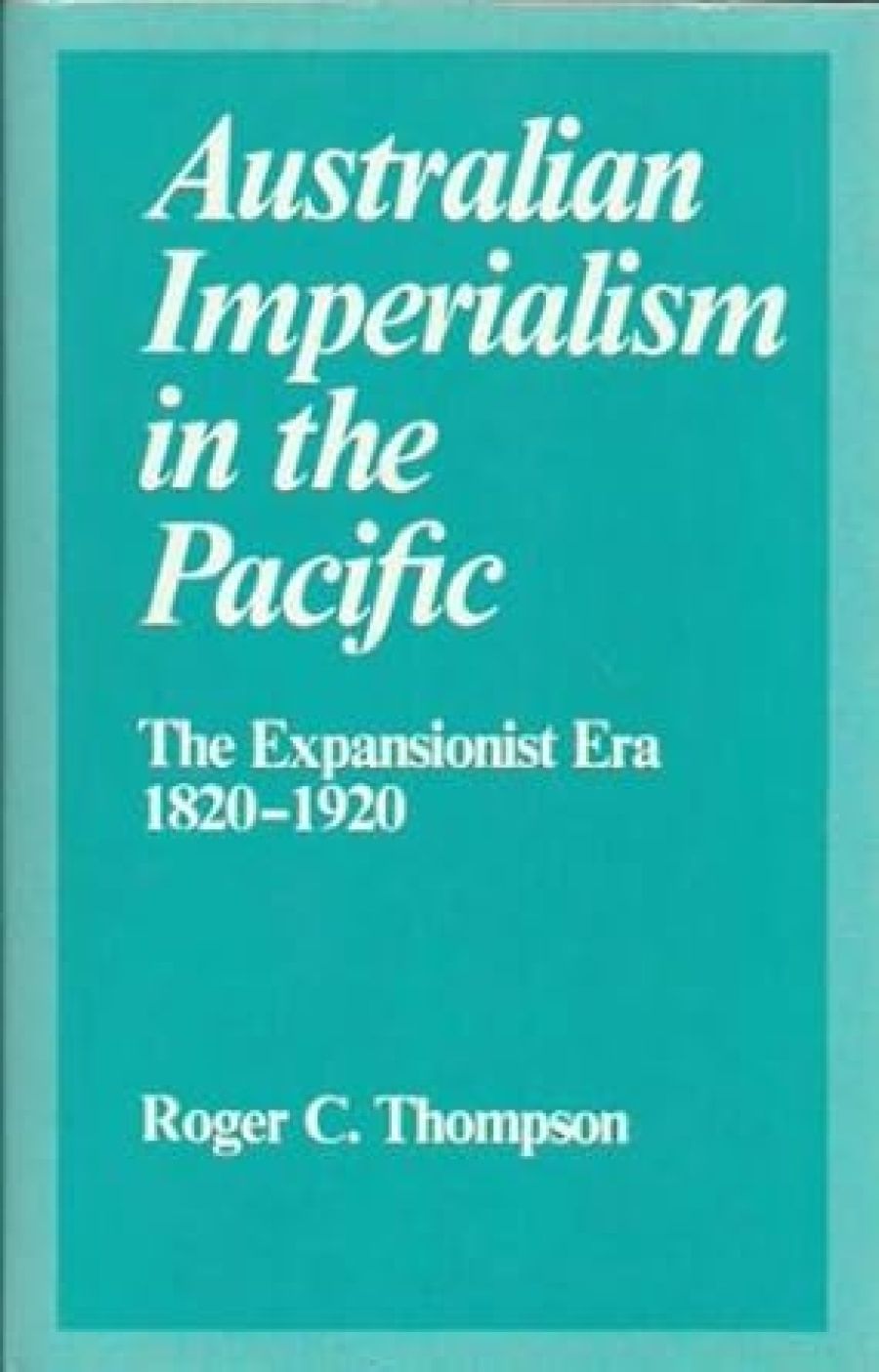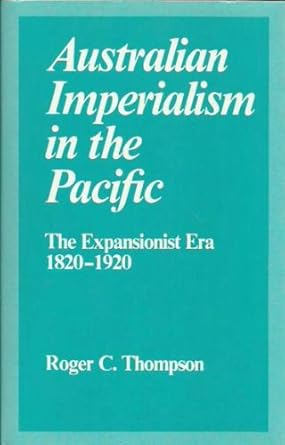
- Free Article: No
- Contents Category: Australian History
- Review Article: Yes
- Article Title: Nationalism and Cultures
- Online Only: No
- Custom Highlight Text:
At a time when Australia’s involvement with Europe and Asia is coming under increasing academic scrutiny, an area which has continued to be neglected has been Australia’s relations with the Pacific Islands of Melanesia, Micronesia and Polynesia situated so closely north and east of its coast. While others have touched on this subject briefly, Roger Thompson’s Australian Imperialism in the Pacific presents for the first time a detailed, meticulously researched and scholarly investigation which covers the period from the early days of the colony of New South Wales to the end of the First World War. It is, then, a timely study, filling a gap in our knowledge, and it is sure to be welcomed by scholars of both Australian and Pacific history.
- Book 1 Title: Australian Imperialism in the Pacific
- Book 1 Subtitle: The expansionist era 1820-1920
- Book 1 Biblio: MUP
- Book 1 Cover Small (400 x 600):

- Book 1 Cover (800 x 1200):

The study focuses both on public attitudes to the Pacific, deduced for the most part from newspaper editorials, and public policy towards the islands developed by various colonial and early federal governments. It shows the extent to which Australians sustained a lively interest in acquiring economic and political influence in the Pacific throughout the period, little daunted by the lack of armed might with which to carry through its plans. This imperialism was by no means an expression, for the most part, of Australian nationalism. On the contrary, Australian zeal was almost totally directed towards the extension of the British Empire in the Pacific, and hence towards persuading British governments to acquire and support financially new island possessions. Britain was not always co-operative when Australians protested at French or German intentions in the Pacific: such encounters with their European neighbours were minor moves on the chess board of the great powers. Nevertheless Australian pressure went a considerable way to accounting for the spread of British power in the Pacific during these years. Nationalism might be seen at work perhaps only once in the colonial period, when Queensland’s premier, Thomas McIlwraith, sent an expedition to New Guinea to forestall a rumoured German annexation only to see his hopes dashed. One further display of nationalism, this time in the federal period, was the acquisition of Papua from Britain, and of New Guinea as a mandate of the League of Nations after the First World War.
There was change in the motivating forces behind Australian imperialism during the century, and change in the intensity of attachment displayed. Early colonial governments had two main reasons for their preoccupation with the Pacific: the search for economic advantage in the small island worlds, and the support of Protestant missionaries’ policies. It was the Presbyterian Church in particular that promoted the policy of Victorian Governments’ opposing French attempts to gain complete control of the New Hebrides. It was economic greed which led to protests when the French seemed about to acquire New Zealand in the 1830s, and did acquire various islands including Tahiti in the forties and early fifties, and which led to the search for an island labour supply for the Queensland sugar plantations later in the century.
Thompson suggests, however, that it was only after the 1870s that strategic considerations became uppermost in Australian imperialistic policy, as other powers challenged Britain’s hegemony and colonists felt increasingly insecure about their hold on a vast under populated island continent. Australians responded with their version of a Monroe doctrine and notion of ‘manifest destiny’, with their contribution to the zealous ‘new imperialism’. Yet this imperialism did not go unchallenged within its own borders. From the ranks of Catholic Irish radicals, the labour movement and the proponents of free trade came protests at Australian acquisitiveness. The major restraint on this imperialism, however, was not indigenous protest, but the sheer magnitude of Australia’s internal frontier which absorbed energies to a greater extent than in New Zealand, by comparison, which pursued a more active Pacific policy.
Thompson has researched with painstaking care the newspapers, Hansards, and diplomatic archives for much of his material, and within the confines of his interests, the book is exhaustive, offering a counterpart to Angus Ross’s similar study for nineteenth century New Zealand. Perhaps unfairly, one feels dissatisfied with that scope. Clearly an investigation of the impact of Australian capital and Australian political influence on the island cultures is the task of those who specialise in the history of those islands. Yet a study of Australian public attitudes through the medium of news-paper editorials leaves much unanswered – much unasked, we might say. Did Australians, like Europeans, cherish romantic images of Pacific islands as a source of repose and delight? How did images of Polynesians, for example, compare with Australian attitudes to aborigines, and what was the reason for the difference? What were the differences in response, of Victorian merchant, working-class Catholic, or Queensland plantation owner? Because of the interesting questions left untouched, Thompson’s study at times becomes tedious in its detailed probing of those he does raise.
The judgement in the book, however, is sound, the argument convincing and it is written with clarity and coherence. It will be of considerable interest to scholars within this and related areas, and other historians have been provided with a sound basis from which to proceed with other specialized research.


Comments powered by CComment